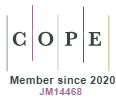Using Tracer Condition Methodology to Evaluate the Assistential Process Offered to Patients with Severe Sepsis and Septic Shock
DOI:
https://doi.org/10.5585/rgss.v6i2.308Keywords:
Public Health, Health Management, Quality of Care in Health, Health Evaluation, Sepsis.Abstract
Objective: To propose the managerial analysis of the care process using the sepsis as tracer disease quality. Results: We retrospectively evaluated the records of 18 patients from a single Brazilian public hospital. Adherence to the quality of the care process indicators of sepsis, proposed by the Surviving Sepsis Campaign, was low: lactate collection = 22%; blood cultures = 33%; antibiotics = 28%; use of expanders or vasopressors = 72%; measuring central venous pressure = zero; measurement of central venous oxygen saturation = 6%. In any case, there was not joint implementation of all above items. There was prolonged stay of patients in the emergency room before hospitalization, delayed perception and diagnosis of sepsis, and immediate availability of intensive care for hospital bed. Conclusion: the care in sepsis seems to be sensitive to the quality of health services.Downloads
Downloads
Published
How to Cite
Issue
Section
License
Copyright (c) 2019 Revista de Gestão em Sistemas de Saúde – RGSS

This work is licensed under a Creative Commons Attribution-NonCommercial-NoDerivatives 4.0 International License.
Autores mantém os direitos autorais e concedem à revista o direito de primeira publicação, com o trabalho simultaneamente licenciado sob a Creative Commons Atribuição - Não comercial - Compartilhar igual 4.0 Internacional que permite o compartilhamento do trabalho com reconhecimento da autoria e publicação inicial nesta revista.
Autores têm autorização para assumir contratos adicionais separadamente, para distribuição não-exclusiva da versão do trabalho publicada nesta revista (ex.: publicar em repositório institucional ou como capítulo de livro), com reconhecimento de autoria e publicação inicial nesta revista.
Autores têm permissão e são estimulados a publicar e distribuir seu trabalho online (ex.: em repositórios institucionais ou na sua página pessoal) a qualquer ponto antes ou durante o processo editorial, já que isso pode gerar alterações produtivas, bem como aumentar o impacto e a citação do trabalho publicado (Veja O Efeito do Acesso Livre) em http://opcit.eprints.org/oacitation-biblio.html
- Abstract 166
- PDF (Português (Brasil)) 215




